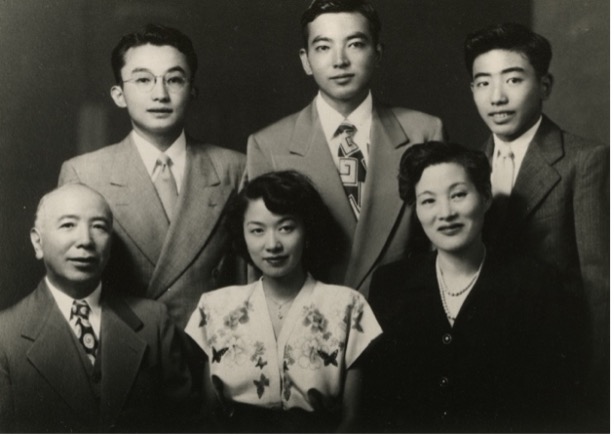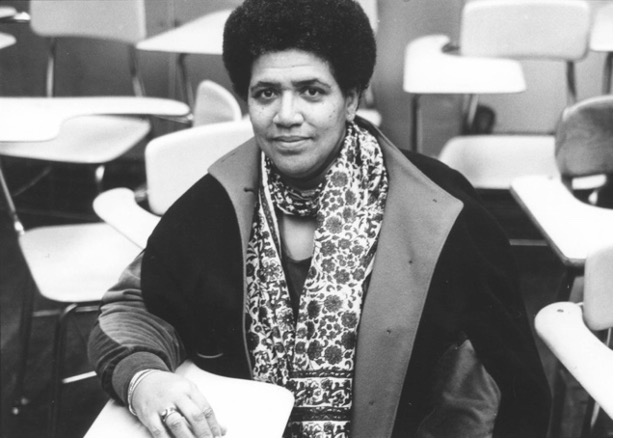by Satoko Saito
My project was inspired by a Nisei of Japanese descent, Mitsue Yamada (born in 1923). She is an activist and one of the first Japanese Americans to publish a personal account of internment during WWII. When she was teaching the Ethnic American Literature course, one of her students blurted out that she was offended by its militant tone and that as a white person she was tired of always being blamed for the oppression of all the minorities. Some students also nodded in tacit agreement. To Yamada’s surprise, they said they were not offended by any of the Black American, Chicano or American Indian writings. They “understood” the anger expressed by the Black and Chicanos and they “empathized ” with the frustrations and sorrow expressed by the American Indian. But the Asian Americans?? Then finally, one student said it for all of them: “It made me angry. Their anger made me angry, because I didn’t even know the Asian Americans felt oppressed. I didn’t expect their anger. ” I was thrilled by these words. However, I think it is true that Asians, especially women, have never been very outspoken in asserting themselves, due to their cultural backgrounds. Yamada reflects, “[internment] was just something that we never talked about. It’s an experience that one had to be ashamed of.” Yamada became politically conscious during the black civil rights movement in the 1950s and 1960s. The words of Audre Lorde (1934-1992), – “My silence did not protect me. Your silence will not protect you”- resonated with her, and she recognized that she should bring the voice of Asian Americans. Perhaps most of Asian Americans were first intensely interested in the black resistance movement, and then gradually became aware of their own inner voice and awakened to action.
For example, Yuri Kochiyama (1921-2014) was also a Nisei activist with an experience in American internment camp. She was influenced by association with Malcolm X, and her Maoist beliefs, and advocated for many causes, including black separatism, the anti-war movement, reparations for Japanese American internees, and the rights of political prisoners. I believed that filmmakers should be as objective as possible. However, the early Third Cinema filmmakers were very much in dialogue with their audiences, sometimes intervening with them. I was tremendously excited by that. I would like to be more active in the NY community as an Asian filmmaker and break my silence. I decided to investigate the BIPOC media support system to find out what methods are available to help me do that.
Mitsue Yamada (center) Courtesy of the Yasutake Family Collections
Audre Lorde/ One Archives Foundation
First, I’d like to introduce film cooperative and film distribution models in NY.
The Film Director and Producer to Look Out for _ Christine Choy
Third World Newsreel
Third World Newsreel is radical and revolutionary. They cover film training for public, production and distribution about social issues. It was established in 1967 as Newsreel, an activist filmmaker collective and this NY group grew to become a network with chapters across the U.S. and focused on the anti-war and women’s movements, Civil and human rights movements, getting unique access to such groups as the Black Panther Party. Christine Choy who is one of the first Asian American filmmakers started her career here. She was born as a daughter of a Korean father and a Chinese mother in Shanghai. In 1965, Choy got a scholarship and studied architecture at a college in New York. She was not interested in politics, but she joined because her hippie friends were a part of Newsreel. She gradually started wanting to become a filmmaker. According to her, after the Vietnam war, most members of Newsreel lost interest. She inherited this organization and throw the name to focus on the third world.
More here: Third World Newsreel Briefly (2019, promo, 6.5min, Third World Newsreel)
www.twn.org
Cineminga on independent Sources (2012 3:16)
Cineminga
Cineminga (2008- ) is for Indigenous Media Networks of the World. One of the reasons I paid attention to this NGO was that one of its founding members was a Japanese woman. She has visited indigenous communities around the world and provided equipment and skills for filmmaking and collaborative production in Colombia, Ecuador, and Nepal. I was also greatly interested in her documentary about the Ainu people in Japan. Tiokasin Ghosthorse, one of the board members is a radio journalist and host of First Voices Indigenous Radio in New York on Pacifica Radio Network’s 50,000-Watt flagship station – WBAI NY 99.5 FM – since 1992. He has performed world-wide as a master flautist and has been featured at the Cathedral of Saint John the Divine and the Metropolitan Museum of Art, the United Nations, numerous universities and concerts. He is an enrolled member of the Cheyenne River Lakota Reservation in South Dakota. Cineminga is about enhancing cultures through filmmaking. They collaborate with video makers around the world, produce current event stories, and license them to broadcasters. Their goal is to contribute to the sustainability of video work focused on cultural preservation, revitalization, and transformation, being done in historically marginalized communities.
cineminga.org
A-Doc
A-Doc is a national network that works to increase the visibility and support of Asian Americans in the documentary field. They are committed to sharing ideas and resources, providing mutual support and mentorship, and advocating for equity and diversity in the production and distribution of non-fiction storytelling. Their website has a database of A-Doc members and their areas of expertise in filmmaking. If you’re looking to collaborate with an A-Doc member for your project, this is your go-to resource.
a-doc.org
Brown Girls Doc Mafia
Brown Girls Doc Mafia supports over 4,500 women and non-binary people working in the documentary film industry worldwide. They fight inequality by sharing resources, demanding access and visibility in creative and professional environments, enriching our community with the knowledge to sustain ourselves economically, and cutting through oppressive industry structures for our members.
browngirlsdocmafia.com
Cinema Tropical
Cinema Tropical (2001-) builds a dedicated audience for Latin American cinema in the U.S., and have served as a platform for the distribution and exhibition for the talent of the region.
cinematropical.comFirelight Media Documentary Lab (2019 3:41)
Firelight Media
Firelight Media produces documentary films, supports filmmakers of color, and cultivates audiences for their work in NY.
www.firelightmedia.tv
Whom the airwave belongs to?
Of course, It should belong to everyone just as clean water and air. And in racially, linguistically, and culturally diverse American society, there has historically been a need for a place that provides all citizens, including minorities, with opportunities for information and expression that are not necessarily guaranteed by the mass media. The Public Access Channel (PAC) was born as a place for this purpose. Let me introduce this as I thought this was also important to spread BIPOC voices. I’d like to share the dramatic history. I believe it is useful to learn it to understand the current status of all media in the U.S. Now, YouTube and Twitter have changed the scene; they have owners who make a lot of money from it and who can decide who can and cannot use the platform, what they can and cannot say. They can decide what you can and cannot say. In the late 1960s, the idea emerged that citizens should create their own stories, rejecting the standards of right and wrong gathered by some in power. The Constitution made it imperative that all citizens have access to telecommunications media to ensure freedom of speech and diversity, and in the digital age, everyone should have free access to electronic media. It obliged cable television companies to broadcast programs independently produced by citizens. In the 1970s, Cable TV operators were required to provide minimum policy facilities and equipment and to broadcast citizen programming free of charge on a first-come, first-served basis. They were also required not to censor, edit, or discriminate against users as long as the content was not personal slander, obscenity, advertisements, or wealth lottery. In fact, some of the PAC’s content was of low quality and self-righteous. And channel operators routinely balanced out programs that were too self-righteous by airing claims of content diametrically opposed to them. However, historically, all ideas and cultures were minorities when they first appeared.
Below is a list of representatives of current NY public access.
Manhattan Neighborhood Network (MNN)
Brooklyn Information & Culture (BRIC)
Queens Public Television (QPT)
Staten Island Community Television
Conclusion
In the U.S. where diverse ethnic groups coexist, citizens themselves have created opportunities for self-expression, exchange, and stimulation without discrimination. In such an environment, Asian Americans like Yamada were trained, and raised their own voice. There is something especially magnetic about New York to coexist and grow together.


